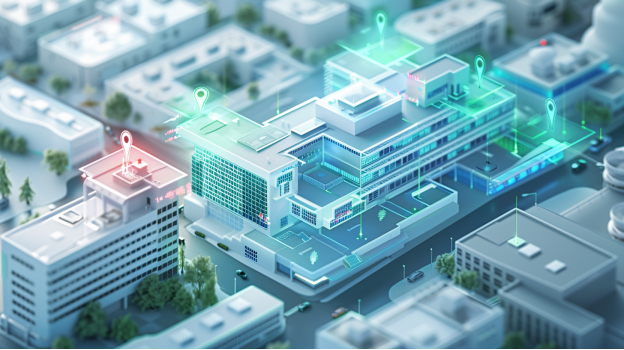Healthcare facilities, especially hospitals, rank among the top five largest CO2 emitters globally. Experts call for urgent action and claim that hospitals can cut emissions by at least 20% by introducing AI into their energy management systems.
December 10, 2024 – Vilnius, Lithuania. According to a World Economic Forum report, healthcare facilities consume up to 5% of global energy. This places the sector as the 5th largest greenhouse gas emitter globally. In the U.S., healthcare institutions consume close to 10% of total energy in the commercial sector, showcasing the need to prioritize their energy operations. Energy efficiency experts emphasize that AI-driven tools can help hospitals optimize their energy use and reduce it by up to 20%.
“Hospitals stand out from other commercial buildings. For example, they must maintain precise climate control to ensure patient safety. It means HVAC systems that regulate temperature and humidity for operating rooms, intensive care units, and laboratories must run uninterrupted,” said Donatas Karčiauskas, the CEO of Exergio, a company that implements AI-based energy performance solutions in commercial properties.
Overall, hospitals contribute to up to 5% of CO2 emissions, which makes these buildings leave the largest carbon footprint within the healthcare sector, a protocol published by Cochrane Library reveals. According to Karčiauskas, aside from HVAC systems, life-saving equipment is also often energy inefficient.
“In hospitals, life-saving equipment such as ventilators, MRI machines, and dialysis units require constant power. There are also redundant systems such as backup generators that are essential to prevent outages during emergencies. Hospitals need more electricity than other commercial buildings, and they must adopt novel technologies to achieve that,” he added.
The U.S. Department of Energy found that energy-efficient hospitals could save approximately $0.5 to $1 per square foot in energy costs annually, which accumulates quickly in large facilities. These could be a result of optimizing HVAC systems, upgrading lighting, and improving insulation. All of that reduces the carbon footprint and helps maintain operational reliability.
AI-powered platforms offer a novel approach to energy management in hospitals. Models outlined in a study titled “Optimizing Energy Usage in Hospitals and Medical Centers with AI/ML” showcase 20%-30% reduced energy costs and 10%-25% lower carbon emissions.
“It’s not just in academia and research–AI platforms for energy management already work well in practice. Our tools have been shown to reduce electricity consumption by up to 20% by continuously optimizing HVAC, lighting, and other building systems in real-time. Predictive maintenance tools also ensure that equipment runs efficiently, preventing costly breakdowns and reducing downtime. For example, a building’s heating and cooling systems can work simultaneously by error and AI would detect that, and correct it,” continued Karčiauskas.
Exergio applied its AI-based solutions in such commercial buildings as banks, municipalities, shopping, and business centers. Most recently, they helped a commercial buildings complex in Poznan, Poland, cutting energy waste by 20%. Complex owners saved about €80k as a result.
According to Karčiauskas, the method can successfully be replicated in any building type, including hospitals.
“Managing energy in healthcare facilities is fully feasible. It’s only a matter of time before such systems will integrate smoothly with existing hospital technologies. They would also ensure the optimization of both operational processes and patient care systems. As a side bonus, AI-driven solutions will help hospitals cut electricity bills and save money,” concluded Karčiauskas.










